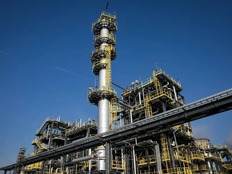- The project involves a €750 million investment, with €560 million for the SAF/HVO unit and €190 million for green hydrogen facilities.
- The facility will produce 250,000 tons of sustainable fuels annually.
- SAF and HVO are made from renewable materials like used oils and animal fats, reducing CO₂ emissions by at least 65%.
- OMV Petrom plans to expand EV charging points to over 5,000 by 2030 in Romania.

Project Overview
OMV Petrom has initiated the construction of a sustainable aviation fuel (SAF) and renewable diesel (HVO) production unit at the Petrobrazi refinery. This facility will be the first of its kind in Southeast Europe, with an annual production capacity of 250,000 tons. The project represents a total investment of €750 million, with €560 million allocated for the SAF/HVO unit and €190 million for two green hydrogen production facilities.
Production and Emissions
SAF and HVO are produced from renewable raw materials, such as used vegetable oils and animal fats. These materials undergo advanced refining processes using green hydrogen, resulting in fuels with characteristics similar to conventional kerosene and diesel. The use of SAF and HVO can reduce CO₂ emissions by at least 65% compared to traditional fossil fuels. The facility's flexibility allows for adjustments in raw material types and product mixes based on market demands and feedstock availability.
Energy Transition Strategy
This investment is part of OMV Petrom's Strategy 2030, which focuses on energy transition and reducing carbon emissions. Between 2022 and 2030, 35% of the company's investment budget is dedicated to projects supporting this transition in Romania and the region. The integration of SAF and HVO production with existing infrastructure will help meet the region's sustainable mobility needs.
Future Developments
In addition to sustainable fuel production, OMV Petrom is expanding its electric vehicle charging network, aiming to increase the number of charging points in Romania to over 5,000 by 2030, up from approximately 900 currently. This expansion supports the broader goal of reducing emissions in the transportation sector.

